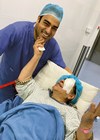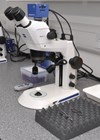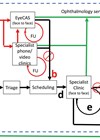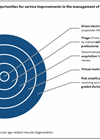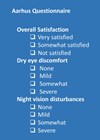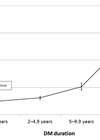Ophthalmology
My ophthalmic elective: focusing on myopia in Taiwan
The authors describe their elective experience and delve further into high myopia, an emerging ophthalmic disease that is increasingly recognised in and outside Asia. The medical school elective programme presents an opportunity for students to conduct learning in their chosen...
Saving sight and changing lives: working with Syrian refugees in Jordan
Two ophthalmologists from the Emory Eye Center share their three-year experience of treating refugees in the camps in Jordan. Jordan currently hosts an estimated 1.4 million Syrian people who have fled the war in their home country. Cataract & Cornea...
Development of a modern surgical simulation suite to promote safer ophthalmic surgical training
For trainees, having access to surgical simulation equipment is more important than ever. The authors describe the creation of a bespoke teaching and training suite in Glasgow to help trainees develop their skills and promote surgical excellence. Simulation has become...
Designing ophthalmology services Part 3: How do we address the queues post‑COVID-19?
Part 1 of this series available herePart 2 of this series available here There is going to be enormous demand on ophthalmology services as they start to welcome patients back. The authors explain how modelling can help make the most...
Nanosecond laser cataract surgery
The authors review the evidence for nanosecond laser cataract surgery: is this the future? Cataract is a leading cause of visual impairment worldwide, and cataract surgery is one of the most successful and cost-effective healthcare interventions, with a great impact...
Preoperative povidone iodine: weighing the risks
Following on from our recent online survey, the authors examine the potential risks and benefits of diluting the concentration preoperative povidone iodine. Povidone iodine (PI) is an iodophore that has an established use as a broad-spectrum antiseptic, mainly for the...
Intracameral antibiotics in cataract surgery: current evidence base
Following on from our recent online survey*, the authors examine the use of intracameral cefuroxime as the standard of care in cataract surgery. Cataract extraction with intraocular lens implantation is one of the most frequently performed surgical procedures in the...
Quality matters in the management of serious eye disorders
The author discusses the first quality standard for serious eye disorders from NICE and takes a look at new care models for enhanced service delivery. Patient backlogs pose risks to patient safety, with research showing that people are losing sight...
Measuring patient-reported outcomes after refractive surgery to assess patient satisfaction
Patient-reported outcomes enable surgeons to evaluate patients’ symptoms and satisfaction after laser vision correction. The great majority of patients are pleased with their outcomes from laser vision correction, whether it is with photorefractive keratectomy, laser in-situ keratomileusis (LASIK), or small...
Newer generation IOL platforms designed for high-quality visual performance after cataract surgery
Expanding intraocular lens (IOL) capabilities provide broadening options, ranging from next-generation monofocal IOLs for basic cataract surgery, to specialised premium IOLs for lens-based presbyopia correction and astigmatism correction at the time of cataract surgery. Rod McNeil considers several newer alternative...
Cataract incidence rates in patients from the UK suffering with diabetes mellitus
The authors summarise the main findings from a recent study which investigated the incidence rates of cataract in patients with or without diabetes mellitus (DM). Background to the study Worldwide, the World Health Organization (WHO) estimates that 253 million people...
What you learn after performing 10,000 cataracts
What do you do when the anterior chamber shallows, or the zonules give way? How do you handle the stubborn epinuclear plate? Raymond Radford shares the benefit of his experience when dealing with tricky cataract surgery. Firstly, you realise you...



